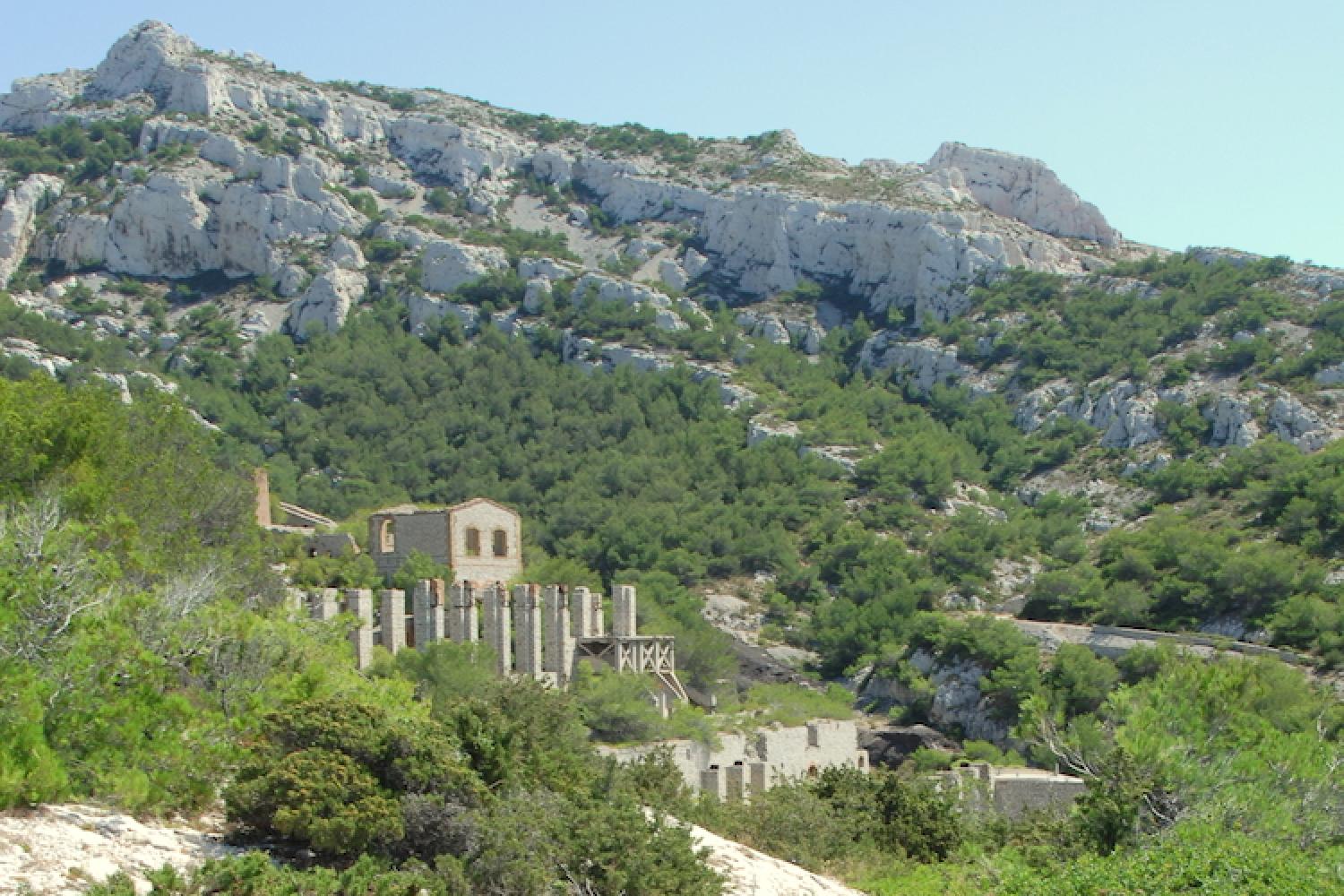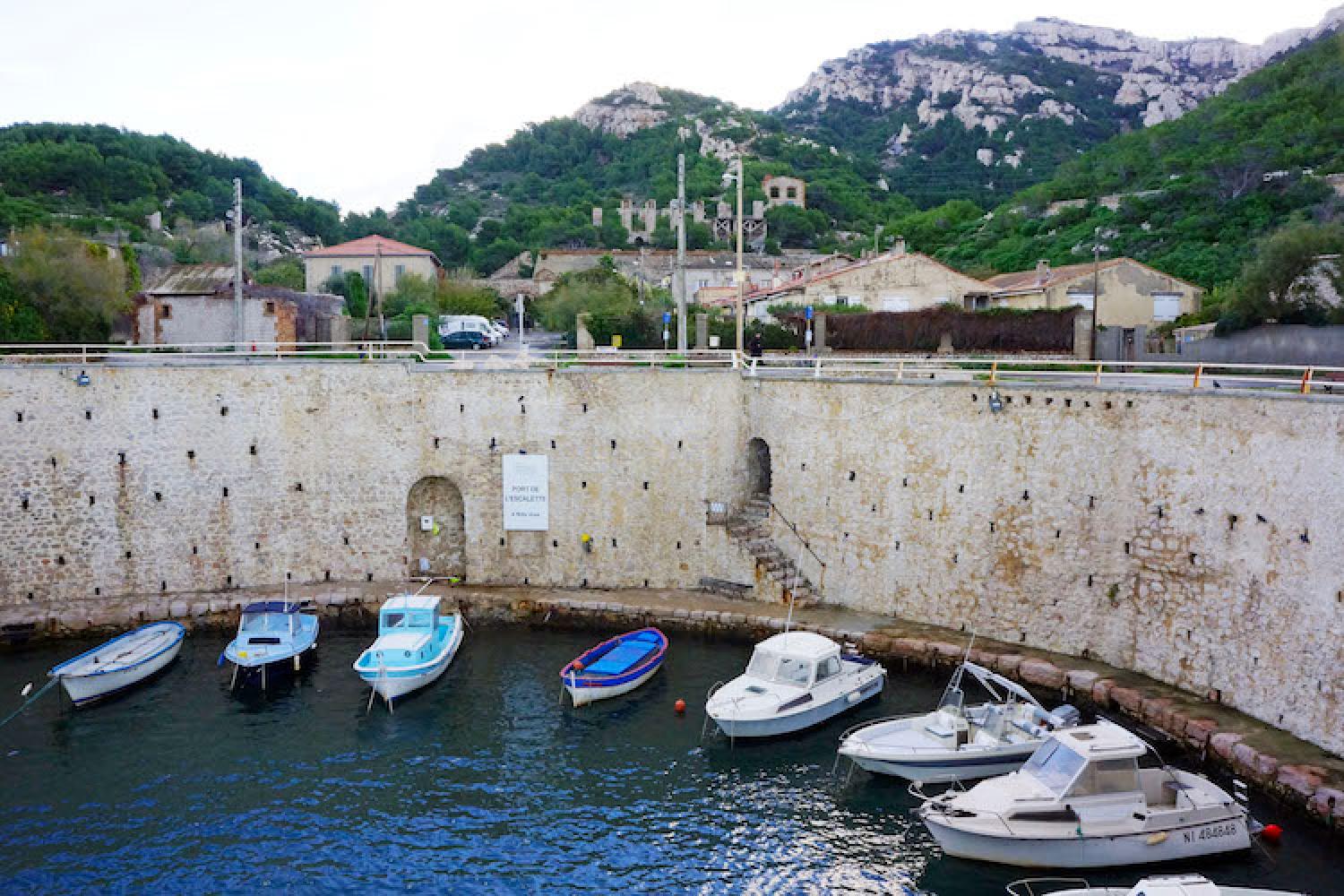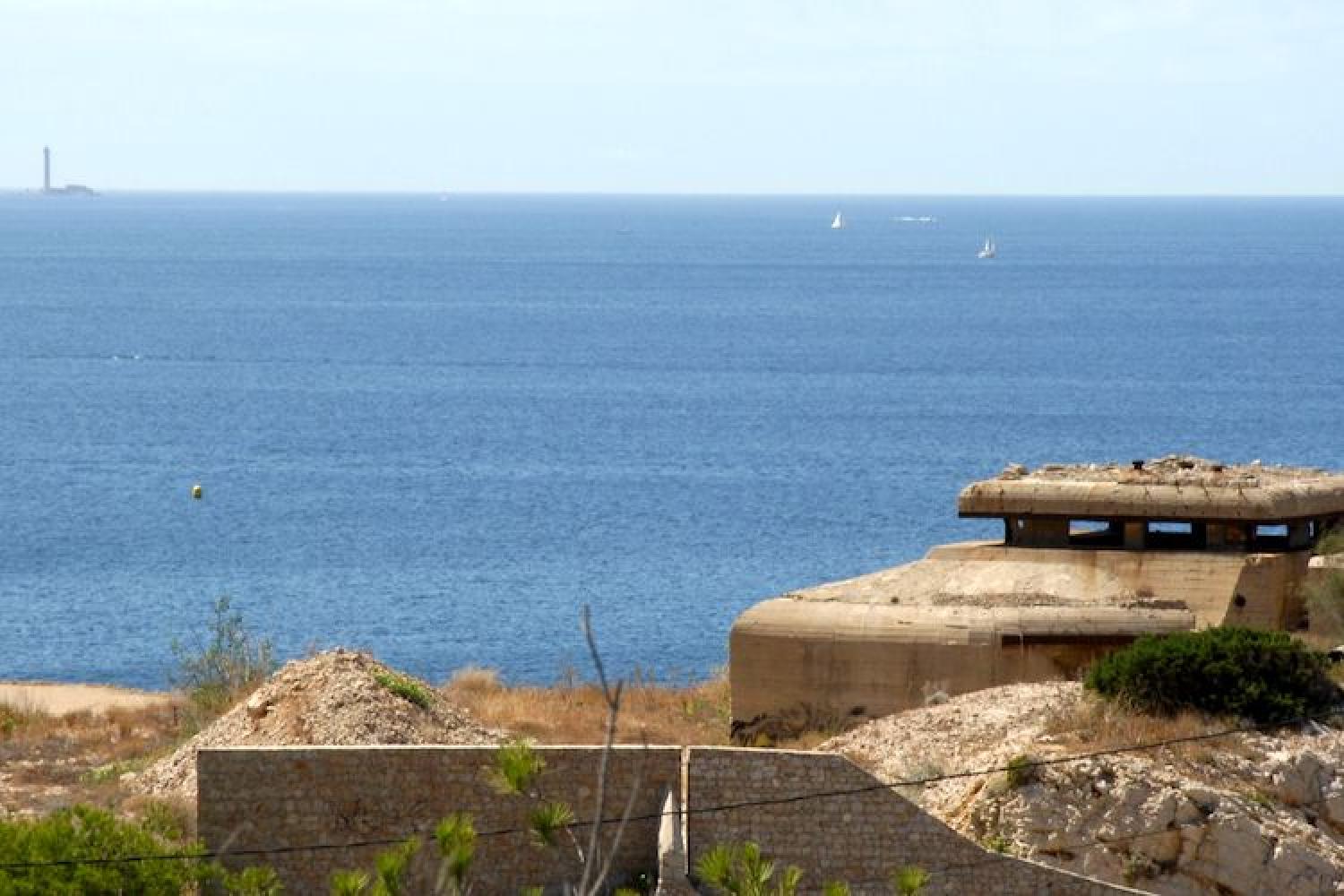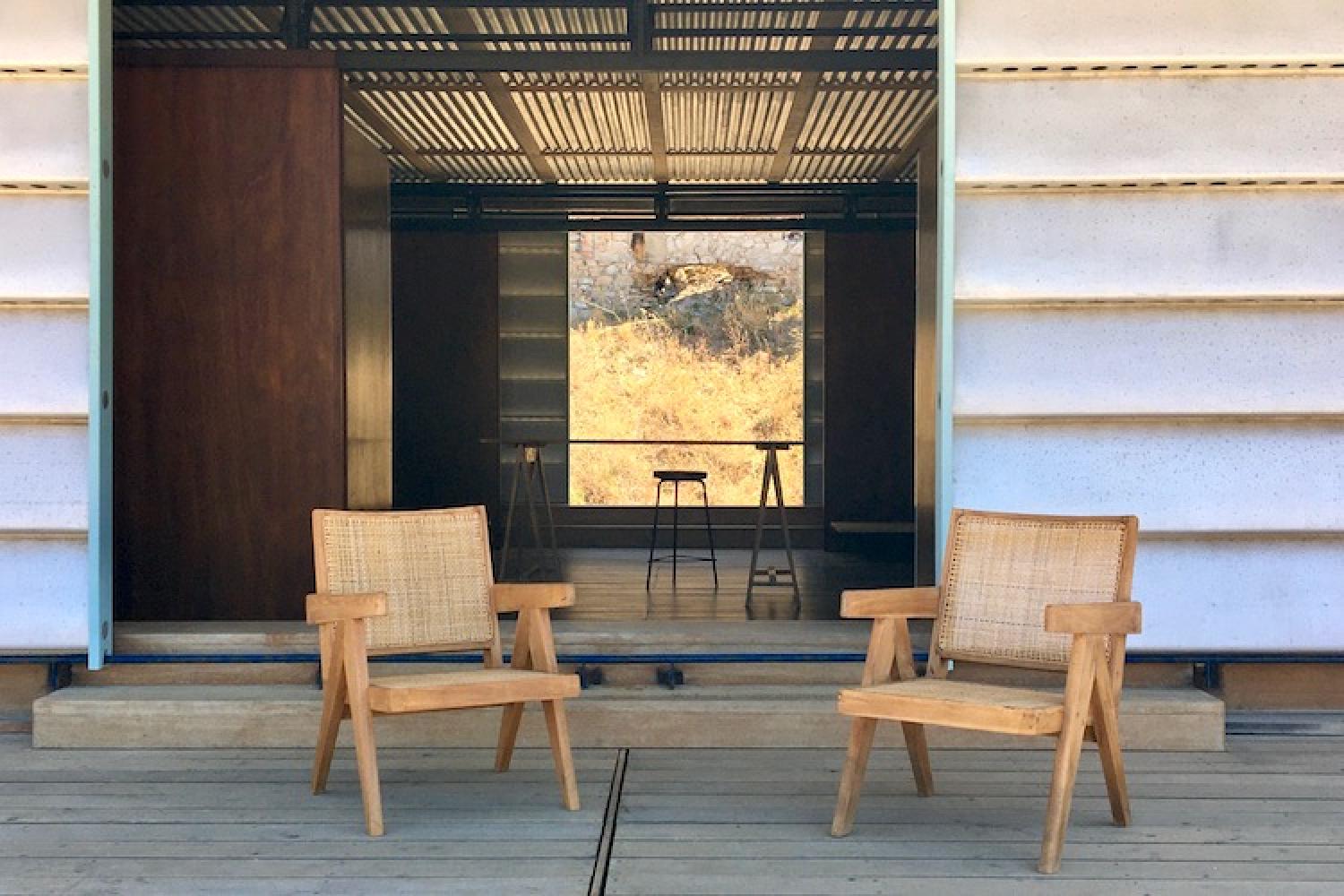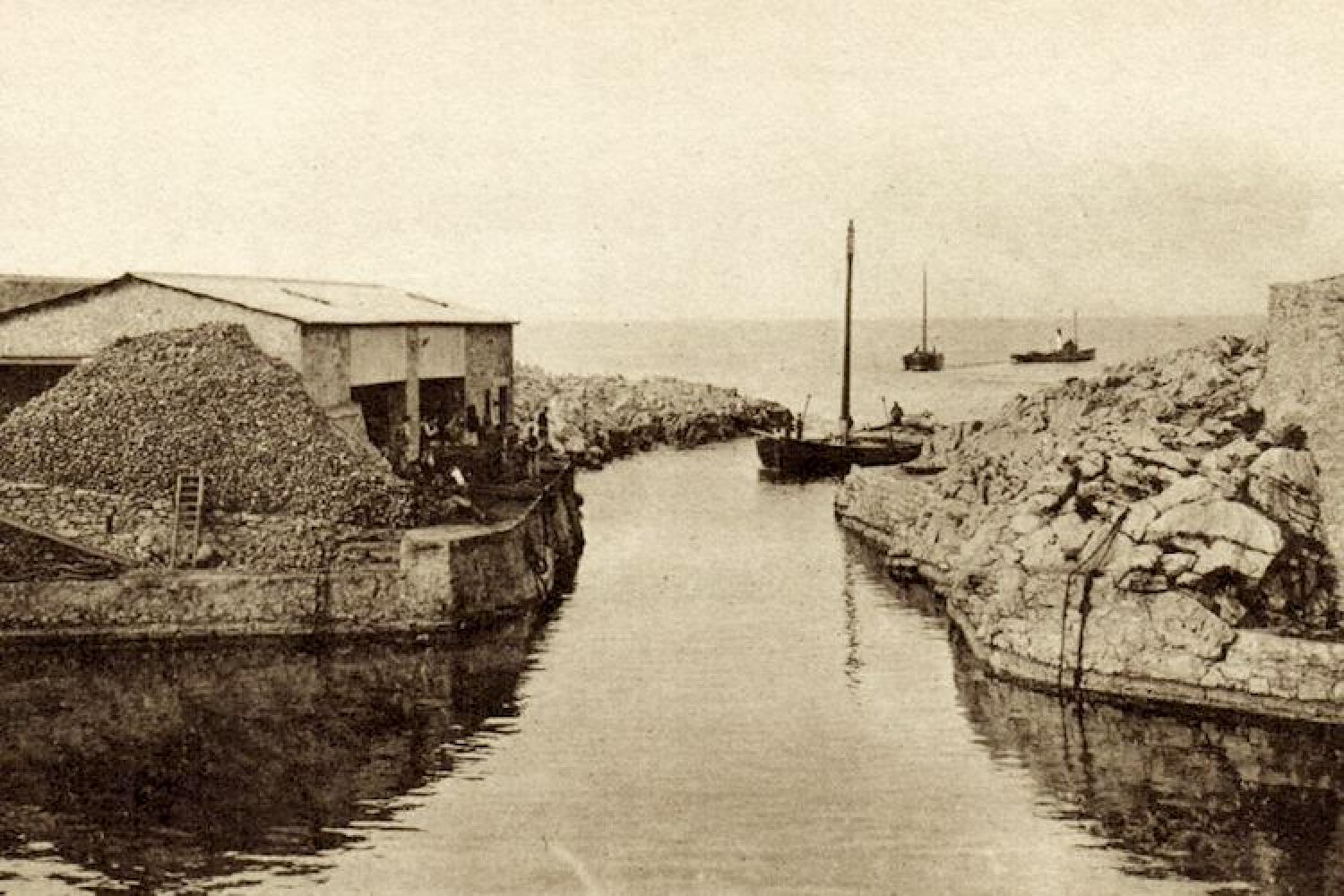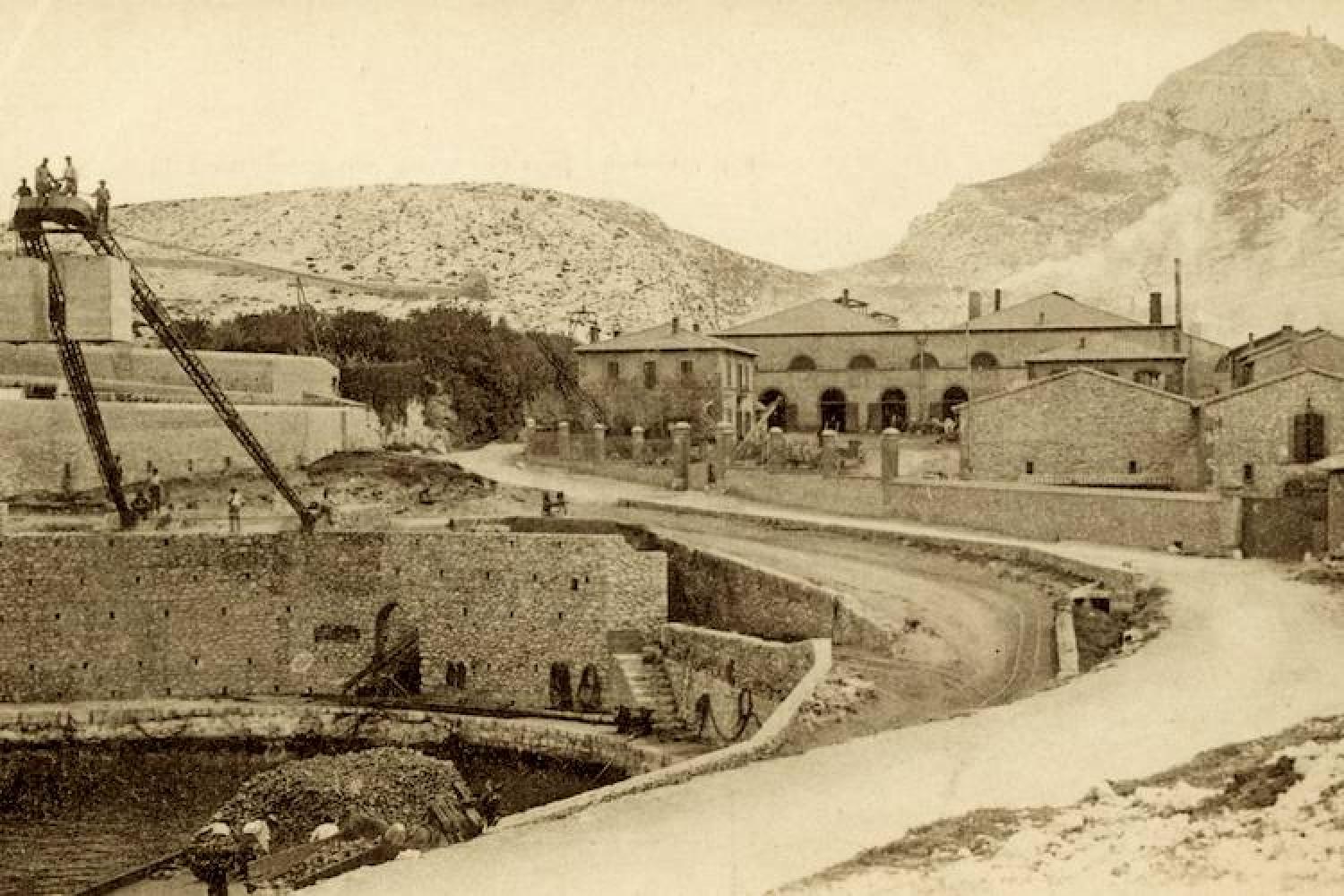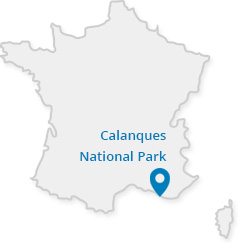A calanque with many lives
An industrial past
The history of Escalette calanque is interwined with industrial development on the southern coast of Marseille in the 19th century. The creation of polluting factories on the coast at the entrance to the Calanques had several advantages at the time, with easy access to the sea for import and export of goods and sufficiently distant from the densely populated city centre.
The lead factory
In 1851, a lead processing factory was created by Mr. Meynier deep in the calanque. In ashlar and brick, it was surrounded by houses for the workers. The ore shipments were transferred from the small port to the factory located above. The lead, shipped by sea or by road, was used to make pipes, or as lead oxide for glass and paint.
At the beginning of the 20th century, the site was modernised and expanded. Nearly 200 workers were employed there, processing up to 60,000 tons of lead ore every year. Owner of the factory at the time, the Rodrigues & Cie bank went bankrupt in 1911. It was taken over by the Penarroya Mining and Metallurgical Company. Due to a reduction in lead prices and ore supply problems, the factory closed permanently in 1924.
A military site
Strategic, the upper areas of the calanque have been used for guarding the surroundings for many years: the name of the district, escaleto in Provençal means stairway, like that used by the guard to reach his lookout.
In around 1860, a French military battery was positioned in the hills overlooking the calanque. A fortress armed with two warning canons, it was extended in 1885. However, not adapted to new technologies at the time, it was never used.
During the Second World War, the Germans worked on the Südwall, also known as the Mediterranean Wall. They dug trenches and built bunkers. A bunker was covered in the 60s and 70s under the backfill from work on the Marseille metro.
Escalette calanque these days
The remains of the old factory are now a private venue for architecture and sculpture exhibitions (see below). The former military installations, not secured, are not open to visitors. The small port of Escalette is now home to traditional fishing boats from Marseille, the famous "pointus".
Did you know?
Slag, waste from lead production and processing, was used to build the coastal road to Callelongue. This explains why the soil is darker in colour in certain places. It is also the source of significant environmental pollution.
Blanche calanque: before and after
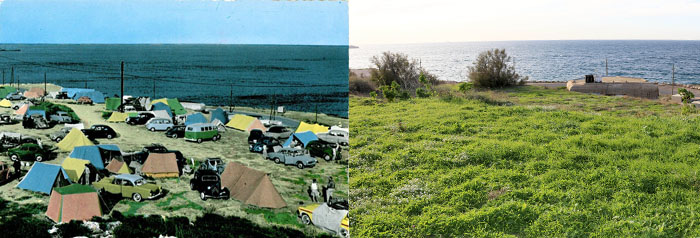
Near Escalette, the Blanche calanque campsite welcomed hordes of tourists for nearly 30 years. A sign of the way managing the calanques has changed, the site overlooking the road has since been returned to nature. Opportunistic and protected plants now live side by side. The very rare maritime cricket was recently observed here.
The photo, dating back to the 50s or 60s, clearly shows how the repeated passage of cars prevented the vegetation from flourishing. The photo taken in 2019 shows a much greener and more peaceful site. The tip of Tiboulen de Maïre island on the left and the bunker on the right are persistent landmarks in both shots.
Open between 1950 and 1955, the Calanque Blanche campsite had around fifty pitches. The site also had facilities with showers and toilets. Closed in 1981, the campsite received a growing number of German tourists over the years. According to testimonies, the tourists and locals got on very well. In some cases, it was life-changing. A young inhabitant of Escalette and a tourist met on the campsite. They later married and now live in Germany!
Getting here and regulations
Before heading out to visit the Calanques National Park, make sure you are prepared and read about good conduct and regulations here.
The hamlet is open to visitors all year round. The surrounding hills are also open to visitors, except when closed due to fire danger. Do not try to enter unsecured military constructions.
The former industrial site in Escalette is open to visitors: the guided tour includes the former industrial sites with a temporary architecture and contemporary art exhibition which is renewed each year. For more information, see Escalette industrial wasteland.
Getting here
RTM but no.19 – direction Madrague de Montredon to the terminus, then walk for 15 minutes, or bus no.20 – direction Callelongue, Escalette stop.
The road south of Marseille is often congested with severe traffic jams at peak hours and weekends, particularly during summer, and sometimes as far as La Pointe Rouge. The village is very congested by motorised vehicles. Avoid driving during peak hours and take public transport or cycle.
Localisation
GPS coordinates: 43.225243, 5.347699




